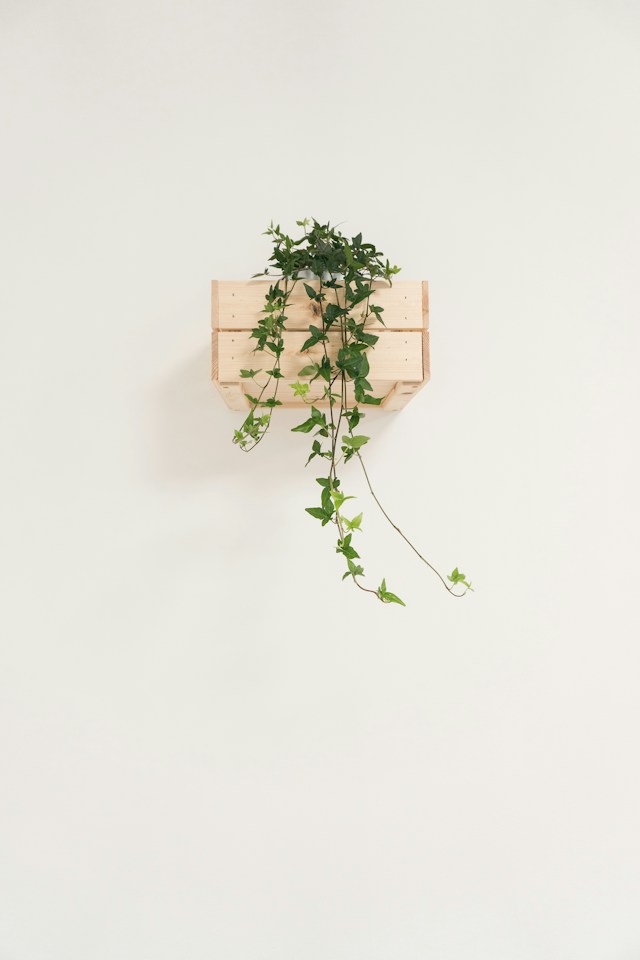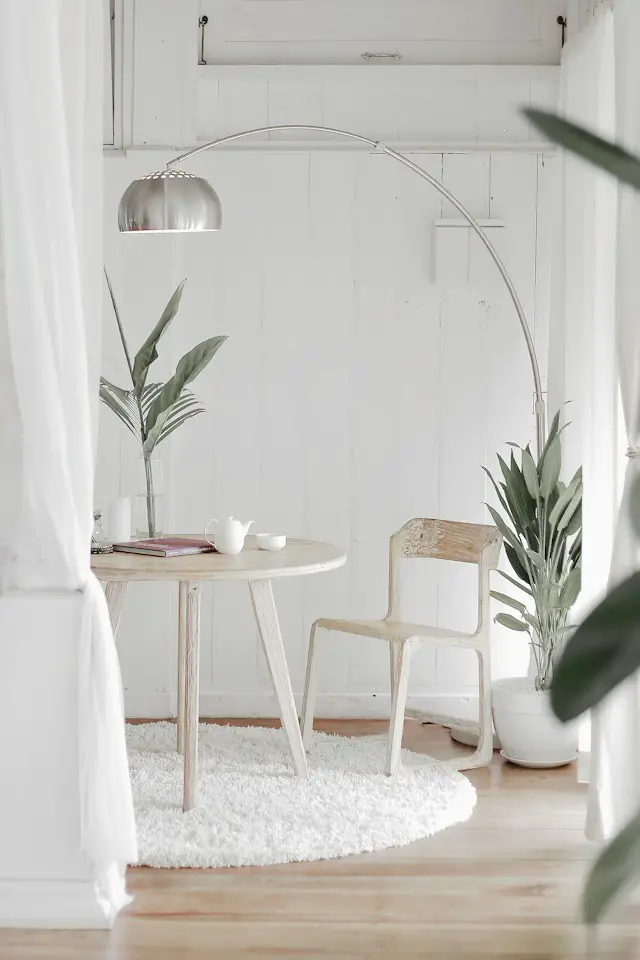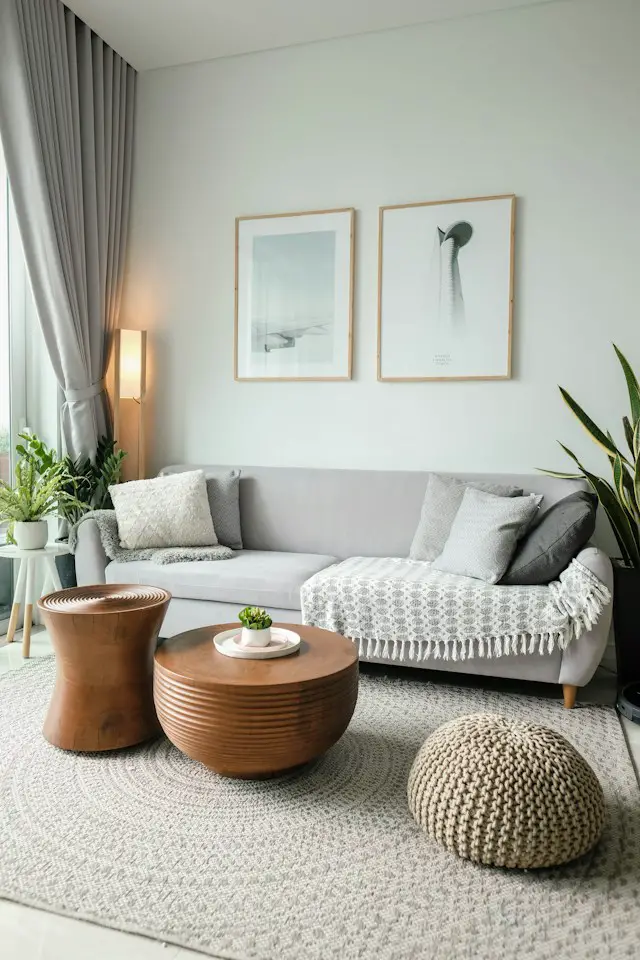Furniture Trends in Home Decoration: Is Minimalism Still in Fashion?
How Minimalism Continues to Influence Home Decoration
In the ever-evolving world of home decoration, furniture trends play a significant role in shaping the overall aesthetic. From vintage-inspired pieces to modern designs, the evolution of furniture has seen various styles come and go. However, one trend that has stood the test of time is minimalism.
Minimalism, with its clean lines, sleek designs, and clutter-free spaces, continues to be a popular choice for homeowners seeking a sophisticated and contemporary look. The concept of “less is more” has pervaded home decoration, influencing everything from furniture design to color schemes.
Today, minimalistic furniture is not just a style choice but also a lifestyle statement, promoting a sense of calmness and harmony in our living spaces. With its emphasis on functionality and simplicity, minimalistic furniture seamlessly blends with any interior design and creates an understated yet elegant atmosphere.
As the demand for minimalist furniture continues to rise, designers and manufacturers are constantly innovating to meet the needs of modern homeowners. From multi-functional pieces to eco-friendly materials, the evolution of minimalistic furniture trends is bringing about new possibilities in home decoration.
Join us as we explore the evolution of furniture trends and discover how minimalism continues to make its mark in the world of home decoration.

Photo by Federica Galli on Unsplash
Key Characteristics of Minimalistic Furniture
Minimalistic furniture is characterized by its simplicity, clean lines, and lack of unnecessary ornamentation. It embraces the concept of “less is more” and focuses on functionality and practicality. Here are some key characteristics of minimalistic furniture:
Clean lines: Minimalistic furniture often features straight lines and geometric shapes, creating a sense of order and simplicity. Curves and intricate details are kept to a minimum, allowing the furniture to blend seamlessly with any interior design.
Neutral color palette: Minimalistic furniture is typically designed in neutral colors such as white, black, gray, and beige. These colors create a calming and timeless look that can be easily incorporated into various interior styles.
Limited accessories: Minimalistic furniture is known for its lack of unnecessary accessories or embellishments. Instead, the focus is on the form and function of the furniture itself. This creates a clean and uncluttered look, promoting a sense of calmness and tranquility in the space.
High-quality materials: Minimalistic furniture is often crafted from high-quality materials such as solid wood, metal, or leather. These materials not only enhance the durability and longevity of the furniture but also add a touch of sophistication to the overall design.
Functional design: Minimalistic furniture is designed with functionality in mind. It often incorporates storage solutions and multi-functional features, maximizing the use of space while maintaining a minimalist aesthetic.
Minimalism in Different Areas of the Home
When it comes to incorporating minimalism into home decor, the possibilities are endless. From the living room to the bedroom and even the kitchen, minimalistic design can transform any space into a serene and clutter-free oasis.
In the living room, consider opting for clean lines and neutral colors. Choose a sleek and simple sofa, paired with a minimalist coffee table and a few carefully curated decor pieces. By keeping the furniture and accessories to a minimum, you create a sense of openness and tranquility.
In the bedroom, minimalism can create a calming atmosphere conducive to rest and relaxation. Choose a platform bed with clean lines and minimal embellishments. Keep the color palette simple and soothing, with soft neutrals or muted tones. Opt for storage solutions that are hidden or integrated into the design, such as built-in closets or under-bed storage.
In the kitchen, minimalism can enhance functionality and create a streamlined space. Choose sleek and modern cabinets with clean lines and minimal hardware. Keep countertops clear of clutter and opt for open shelving to display a few carefully selected items. Embrace a monochromatic color scheme or choose a bold accent color to add visual interest.
Minimalism is preferred in different areas of the home because it promotes a sense of calm, reduces visual clutter, and allows the focus to be on the essential elements of the space. By incorporating minimalistic design principles into the living room, bedroom, and kitchen, you can create a harmonious and inviting home that reflects your personal style.

Photo by Hutomo Abrianto on Unsplash
Popular Minimalistic Furniture Trends Today
Popular minimalistic furniture trends today encompass a range of styles and designs that embrace simplicity and functionality. One prominent trend is the use of clean lines and geometric shapes in furniture. Minimalistic sofas and chairs often feature sleek, straight lines and minimal embellishments, creating a streamlined and modern look. Another popular trend is the incorporation of natural materials such as wood and leather. Minimalistic furniture made from these materials adds warmth and texture to a space while maintaining a minimalist aesthetic.
Minimalistic storage solutions are also on the rise. Furniture pieces with hidden compartments or integrated storage allow for a clutter-free environment, promoting a sense of calm and organization. Additionally, multi-functional furniture is gaining popularity in minimalistic design. Pieces like convertible sofas or coffee tables with built-in storage serve dual purposes, maximizing space efficiency in smaller homes.
Minimalistic furniture trends also extend to lighting fixtures. Simple and sleek pendant lights or floor lamps with clean lines are favored choices for minimalistic interiors. These lighting options provide both functionality and aesthetic appeal, enhancing the overall minimalist design.
Incorporating these minimalistic furniture trends into your home decor can create a harmonious and contemporary space. By embracing clean lines, natural materials, efficient storage solutions, and minimalist lighting, you can achieve a stylish and clutter-free environment that reflects the essence of minimalism.
How to Incorporate Minimalistic Furniture Into Your Home Decor
To incorporate minimalistic furniture into your home decor, there are several ideas you can consider. One way is to start by decluttering your space. Minimalism is all about simplicity and removing unnecessary items. Clear out any excess furniture or decor that doesn’t serve a purpose or align with the minimalist aesthetic.
Next, focus on selecting furniture pieces that have clean lines and a minimalist design. Look for sofas, chairs, and tables with sleek and simple shapes. Opt for neutral colors like white, gray, or beige to create a calming and cohesive look.
Another idea is to incorporate natural materials into your home decor. Choose furniture made from wood, leather, or other organic materials. These materials add warmth and texture to a minimalist space while maintaining a clean and simple aesthetic.
Consider implementing storage solutions (<– affiliate link!) that are both functional and minimalistic. Look for furniture pieces with hidden compartments or built-in storage to keep your space organized and clutter-free.
Lastly, pay attention to lighting. Minimalistic interiors often feature simple and sleek lighting fixtures. Choose pendant lights or floor lamps with clean lines to enhance the minimalist design and provide both functionality and aesthetic appeal.
By incorporating these ideas, you can seamlessly integrate minimalistic furniture into your existing home decor, creating a stylish and harmonious space that reflects the essence of minimalism.

Photo by Minh Pham on Unsplash
Conclusion: The Lasting Impact of Minimalism on Furniture Trends
Minimalism has had a profound and lasting impact on furniture trends in home decoration. Its influence can be seen in various areas of the home, from the living room to the bedroom and kitchen. The simplicity and clean lines of minimalistic furniture have become increasingly popular in recent years.
One reason for the lasting impact of minimalism on furniture trends is its ability to create a sense of calm and serenity in a space. The minimalist aesthetic promotes a clutter-free environment, allowing for a more peaceful and relaxing atmosphere. This is particularly appealing in today’s fast-paced and chaotic world.
Another reason is the versatility of minimalistic furniture. Its simple and timeless design makes it easy to incorporate into any style of home decor. Whether you prefer a modern, Scandinavian, or eclectic look, minimalistic furniture can seamlessly blend in and enhance the overall aesthetic.
Minimalism also promotes sustainability and conscious consumption. By focusing on quality over quantity, minimalistic furniture encourages people to invest in well-made pieces that will last for years to come. This shift towards more sustainable choices has had a positive impact on the furniture industry, leading to the rise of eco-friendly materials and production methods.
In conclusion, minimalism has had a lasting impact on furniture trends in home decoration. Its ability to create a sense of calm, versatility, and promotion of sustainability have made minimalistic furniture a popular choice for homeowners. As we continue to prioritize simplicity and functionality in our living spaces, minimalism will undoubtedly continue to shape the future of furniture design.
Featured Photo by Bench Accounting on Unsplash

